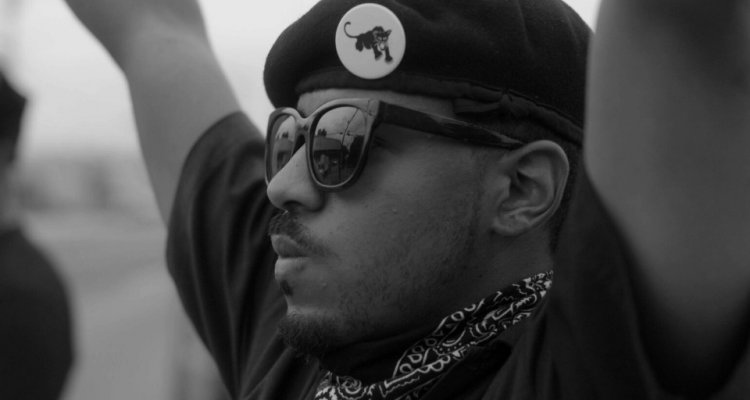Although Roberto Minervini’s piercingly beautiful documentary, “What You Gonna Do When The World’s On Fire?” is shot in monochrome, this layered and complex look at the Black Belt experience is anything but black and white. There’s more to “What You Gonna Do When The World’s On Fire?” than meets the eye. On the surface, the film deals with the flip side of the American Dream, audiences will once again get to see a not-too-distant world of poverty, gentrification, and racial injustice. Lurking underneath that premise, however, is the story of an African American community in New Orleans beset by financial woes and a world that won’t listen, capturing lives in a constant state of motion that at the same time seem to be going nowhere.
It’s a familiar subject for the Italian director. With “Stop the Pounding Heart,” Minervini brought romance to a racist South and, with “The Other Side” he brought liveliness to lifeless drug addicts in Louisiana. What the director does best is to bring poetry to poverty. He’s not an observer in the conventional sense, but a filmmaker who shifts from political to magical realism in a matter of seconds. One second you’re in a Black Panther riot, the next you’re prancing through backcountry meadows with a couple of kids.
The film opens to a couple of Native American protesters marching through the streets. Armed with cultural adornment, they dance to the beat of their own drums. What they’re protesting isn’t exactly clear. The narrative then shifts to another kind of protest: a group of Black Panther activists are in the streets shouting at the cars zipping by. No one listens.
The New Orleans Minervini envisions is one of tranquility. You can hear the echoes of the protesters under the vast skies and empty streets. By interweaving four separate narratives– the Native Americans, the Black Panthers, a mom, and her two kids– the movie is able to investigate that hopelessness from all angles. It’s at its best, though, when observing the mother and her kids.
In moments like these, you forget you’re watching a movie. The fly-on-the-wall technique–shot by Diego Romero Saurez-Llanos— gives the impression that you’re watching real people in real-time. Judy Hill is what binds the narrative together. With hands in the Black Panther movement and the lives of her two sons, she gets the most screen time out of anyone. It helps that she has a movie star’s charisma. When she’s not loving her kids or tending to her bar, she’s setting a new standard in selflessness. Helping others understand the importance of unity, drug awareness, and “Black power,” Judy gives speeches to her friends about staying clean in a part of the country struggling with drugs and violence.
Her sons, 14-year-old Ronaldo and 9-year-old Titus, are what make “What You Gonna Do When The World’s On Fire?” truly special. They are at an age when the world is a playground; swinging from railroad tracks to junkyards without a care in the world. Except they do care. Ronaldo knows all too well the dangers of the streets, just as he seems to be aware of the camera’s presence. In one touching scene, he holds Titus under his arm as the two walk home. Titus can’t seem to stop looking up to his older brother, who cares for him deeply. It’s a vigorous feeling every brother has felt, and it’s a delight to relive it anew.
Lovely shots like these pop up with remarkable frequency throughout the two-hour run time. But Minervini isn’t one to settle for visual enchantment. He finds–with remarkable intimacy– the fear of being an African American amidst racist cops and gang violence. Conversations about injustice make up much of the run time, though, they are admittedly short on answers.
Unfortunately, the film is also a good thirty minutes too long, and the Native American and Black Panther protests are jarring when edited together with the quieter family moments. Many will feel that this would have been a more enjoyable experience if it narrowed the four narratives down to the two more interesting ones (the aforementioned mother and her children).
And yet, despite the flaws, ‘Fire’ still manages to bring spellbinding poetry to everyday life. It finds beauty in kids walking down the street, karaoke in the backyard, and arguments in the bar. It’s also not often enough movies tackle the subject of the Black Belt experience–the cycle of poverty and hardship these Black families endure–so when they do, they should be applauded. This is a portrait of have-nots that you have-to-see. [B-]

